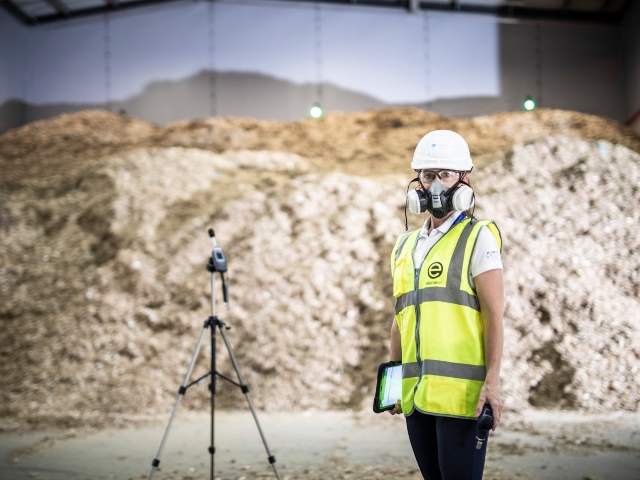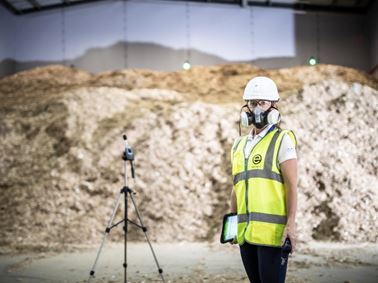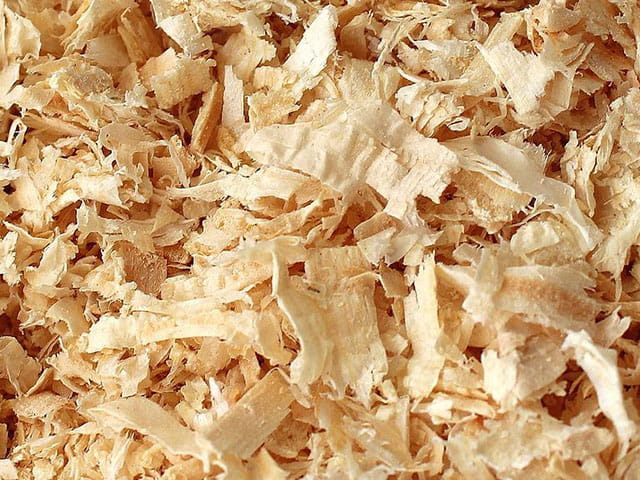The Dangers of Wood Dust Exposure

By Engaged Expert
Parmjit GahirParmjit or Parm to his friends (Head of Occupational Hygiene at Element) is an occupational hygienist with almost 30 years of national and international operational experience gained across diverse industry sectors.
Wood dust is a dangerous and widespread workplace hazard that can cause serious health problems if improperly managed. To ensure worker safety, the Health & Safety Executive (HSE) is currently conducting inspections of woodworking businesses throughout the UK to prevent harmful exposure to wood dust. In this article, Expert Parmjit Gahir explores the risks associated with wood dust exposure and examines the various measures that employers must take to protect their workforce
What is wood dust?
Wood dust is the term used to describe the fine particles produced during woodworking activities such as cutting, sanding, and shaping wood. These particles can be a major threat to respiratory health if inhaled. Different types of wood can produce wood dust, which can contain allergens and potentially toxic substances depending on the type of wood and treatments or finishes applied to it. Although wood dust may seem harmless, inhaling it can lead to various health problems. Therefore, woodworking businesses must acknowledge this danger and take necessary steps to address it.
Health issues associated with wood dust
The dangers of wood dust exposure go far beyond being a mere nuisance in the workshop. Inhalation of wood dust can result in debilitating respiratory conditions such as bronchitis, rhinitis, and sinusitis. Prolonged exposure to certain types of wood dust, like hardwood dust, has been linked to more severe health outcomes, including Occupational Asthma and various forms of cancer. For example, the International Agency for Research on Cancer (IARC) has identified hardwood dust as a Group 1 carcinogen, meaning it is carcinogenic to humans, particularly in the nasal passages. These health risks underscore the importance of implementing effective control measures to minimize wood dust exposure in the workplace.
How much exposure to wood dust is dangerous?
Determining the threshold of wood dust exposure that poses a danger to health is vital for employers and regulatory authorities. The Control of Substances Hazardous to Health (COSHH) Regulations 2002 set Workplace Exposure Limits (WELs) for both hardwood and softwood dusts. These limits specify the maximum concentration of wood dust that workers can be exposed to over a particular period without adverse health effects.
For hardwood dust, the WEL is set at 3 mg/m3, while for softwood dust, it is set at 5 mg/m3 based on an eight-hour time-weighted average.
Compliance with these limits is essential in safeguarding workers' respiratory health and minimizing the risk of long-term complications
How can you control exposure to wood dust?
Effective control of wood dust exposure requires a multifaceted approach that addresses both the source of dust generation and worker exposure:
- Engineering Controls: Implementing dust extraction systems, like Local Exhaust Ventilation or LEV, to capture and remove airborne particles at the source. LEV systems can be integrated into woodworking machinery or workstations to control dust emissions and minimize worker exposure.
- Personal Protective Equipment (PPE): Providing employees with appropriate respiratory protective equipment, such as dust masks or respirators, to minimize direct exposure to wood dust. It's essential to ensure that PPE is properly fitted and maintained to maximize its effectiveness in protecting workers' respiratory health.
- Worker Training and Awareness: Educating employees about the risks associated with wood dust exposure and fostering a culture of safety in the workplace. Employees should receive comprehensive training on the proper use of control measures, safe work practices, and the importance of reporting any concerns or issues related to wood dust exposure.
To control substances that are hazardous to health, it is important to also follow the eight generic COSHH principles outlined in Schedule 2A. These principles should be applied together for effective and reliable control.
Conclusion
Woodworking industries pose significant risks to the health and safety of workers due to hazards associated with wood dust exposure. These risks range from respiratory conditions to severe illnesses such as cancer. It is crucial to take proactive measures to mitigate exposure levels to these hazards. The COSHH regulations provide clear guidance on acceptable exposure limits, emphasizing the importance of compliance to safeguard the well-being of workers.
Element has a dedicated team of 15 Occupational Hygienists qualified by the British Occupational Hygiene Society (BOHS) spread across our network of 10 offices. Working to the specific needs of our clients, we can help by providing a solutions-led approach that consists of designing bespoke studies which will include measurement of exposure to harmful substances, detailed observations of working practices, and consideration of use and effectiveness of control measures in place.
A comprehensive technical report will be provided which will clearly set out the methods employed, an evaluation of sampling data to Workplace Exposure Limits, with clear conclusions on health risk and prioritized recommendations for any improvements that may be necessary.
Our ethical Occupational Hygiene team will support you from the design of the survey through to the delivery and presentation of the report.
Contact us today for more information.
Find related Resources

An Introductory Guide to Occupational Hygiene
A healthy bottom-line is directly linked to a healthy workforce. Download our reference guide to understanding each aspect of occupational hygiene in the workplace.
Download Your Copy TodayRelated Services

LEV Examination and Testing Services
Find out how our LEV testing services help prevent potentially harmful substances that can be produced by production processes being released into the workplace.

Workplace Air Monitoring
Element’s highly experienced team of qualified occupational hygienists specializes in delivering a range of workplace air monitoring services for use within a diverse range of operating environments.

Workplace Noise Surveys and Assessments
Find out how we help our customers to reduce and minimize exposure to noise in the workplace.

Occupational Hygiene
Find out how Elements team of Occupational Hygiene experts apply a combination of science and engineering to anticipate, recognize, evaluate and control potential health hazards in the workplace.

